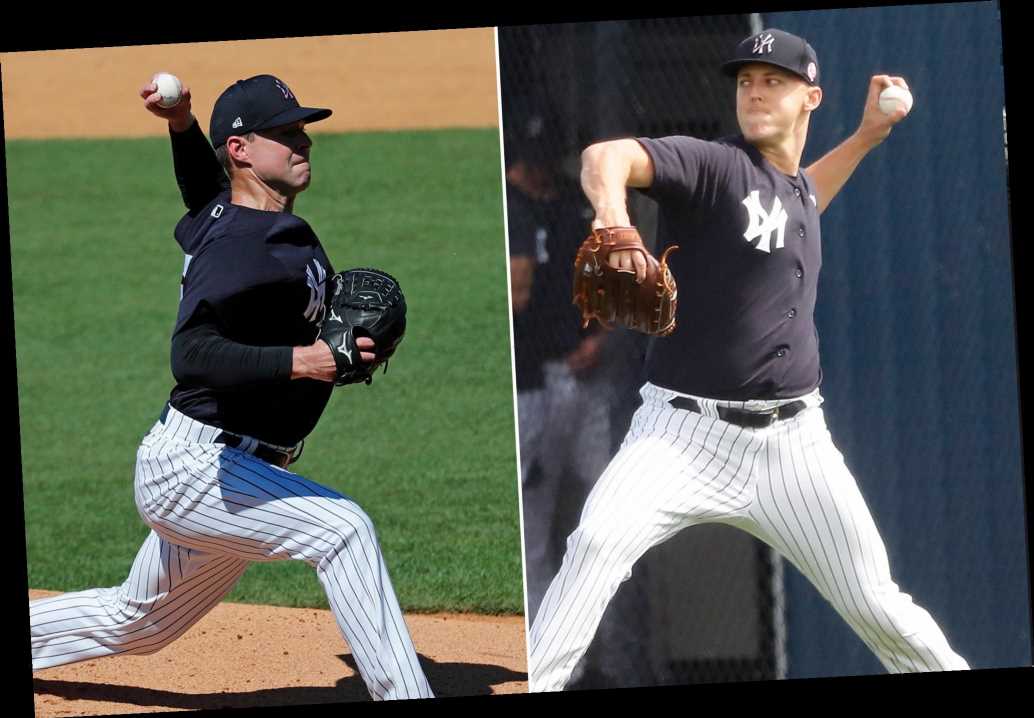More from:
Ken Davidoff
Clint Frazier's time to rise with Yankees is finally here
One college student is using Instagram to make baseball cool again — and players are noticing
Yankees players had right reaction to Domingo German's apology
Yankees facing most heat to win World Series
Kevin Mather spilled the beans on worst kept secret in baseball
TAMPA — A black hole. A rabbit hole.
They are potential destinations when you attempt to determine how much Corey Kluber and Jameson Taillon, neither of whom has pitched much in the past two seasons, can fill the sizable hole in the Yankees’ starting rotation. It’s risky business.
We’ve got to try, though, right? The Yankees certainly tried when they agreed to pay the free agent Kluber $11 million and to trade four youngsters to the Pirates for Taillon.
“Look, I don’t think we’re going 200 innings [each] or … hopefully, if they have a successful year this year, what they’re going to do next year,” Aaron Boone said Friday at George M. Steinbrenner Field. “So we’ll be cautious.”
The two-time American League Cy Young Award winner Kluber, 34, pitched 35 ²/₃ innings in 2019 and one last year after a torn right shoulder muscle quickly sidelined him. Taillon, 29, the second-overall pick of the 2010 amateur draft, clocked 37 ¹/₃ innings in 2019 and zero last year.
Taillon admitted on Friday, “I thought originally 120 to 150 [innings], but that being said, I’m kind of on board with the idea of, let’s just see how I’m feeling and measure it throughout the year.”
Kluber, after throwing live batting practice, insisted: “I don’t have a goal in mind. I’ve never had a goal in mind as far as innings.”
Guess what can be a helpful tool on this matter? Analytics! Here’s a look, in alphabetical order, at how three of the best-known public projection systems envision the Yankees’ high-ceiling, low-reliability duo:
PECOTA, which can be found on Baseball Prospectus:
Kluber: 24 GS, 138 ¹/₃ IP, 9-7 record, 3.63 ERA, 138 K, 41 BB
Taillon: 19 GS, 103 IP, 7-5 record, 3.47 ERA, 97 K, 28 BB
“For injured players like Kluber/Taillon, there’s not a statistical way to dock them that isn’t fairly arbitrary,” Craig Goldstein, the editor-in-chief of Baseball Prospectus, wrote in an email. “Some guys return at full health and remain there until injured again. Some return with diminished capacity. The models that feed PECOTA aren’t going to be able to distinguish or divine which guys fall into which group. The system projects a level of performance informed by their production when last on the field, and extends back a few years.”
Steamer, which can be found on FanGraphs:
Kluber: 26 GS, 156 IP, 10-8 record, 4.18 ERA, 162 K, 43 BB
Taillon: 23 GS, 133 IP, 8-8 record, 4.63 ERA, 121 K, 40 BB
“Kluber’s and Taillon’s projections are both based roughly 60 percent on how they performed in the past and 40 percent on our a priori guess,” wrote Jared Cross, a co-founder of the system. “For pitchers with fewer innings, less noisy results like strikeout rates and walk rates also matter relatively more. We can also see that even though they haven’t pitched much recently, when they did pitch, they threw roughly as hard as they did in the past so, as far as Steamer knows, at least, they haven’t lost their stuff.”
ZiPS, also on FanGraphs:
Kluber: 20 GS, 118 ²/₃ IP, 9-7 record, 3.87 ERA, 116 K, 29 BB
Taillon: 18 GS, 106 ¹/₃ IP, 6-6 record, 4.23 ERA, 89 K, 27 BB
Throw in Luis Severino, hoping to return from his own Tommy John surgery midseason, and Domingo German, who missed all of last year due to a domestic-violence suspension, and there’s a whole lot of guessing going on with these Yankees. The onus will fall on the club to solve this mystery all the way through October.
Dan Szymborski, who created and runs ZiPS, wrote that Taillon “was legitimately excellent in 2018 and likely still has a little upside remaining, which is a mitigating factor against the TJ surgery,” although a second Tommy John procedure doesn’t carry as strong a return rate as the first. As for Kluber, who broke his right forearm on a freak play in 2019, “We have less data to work with for these than for Tommy John or different shoulder injuries. ZiPS codes him as missing time first with arm-general and shoulder-general, which have less of a penalty than if he had torn his rotator cuff or labrum.”
Share this article:
Source: Read Full Article







